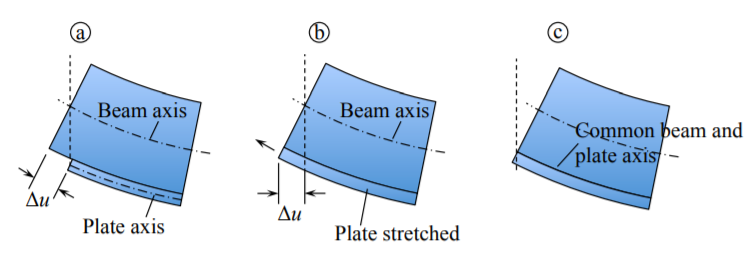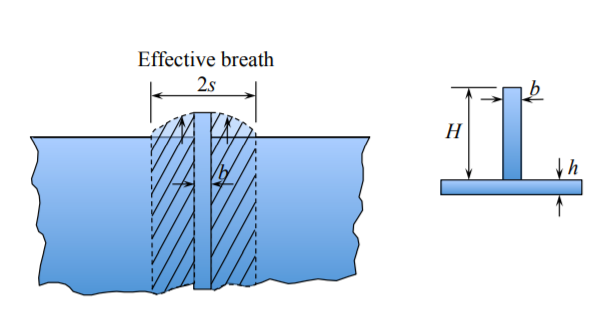6.9: Shear Lag
- Page ID
- 23580
The question is how to remove the incompatibility of in-plane displacements between the beam and plate, shown in Figure (6.6.5). Let’s magnify this figure to see what is happening at the edge.

In Figure (\(\PageIndex{1a}\)), the beam and the plate are bent separately about their respective bending axes. One way of making the incompatible edge displacement to vanish, \(\Delta u = 0\), would be to stretch the plate to match the tensile side of the beam. This will entail considerable in-plane sheer stresses and strain on both sides of the foot of stiffener.
The finite region of the plate subjected to large in-plane shear is called the “effective breath”. Most of literature dealing with bending of stiffened plates took the approach called the shear lag. This approach is based on the continuity of shear forces and stresses at the beam/plate interface. The determination of the effective breadth falls behind the scope of the present lecture notes.



